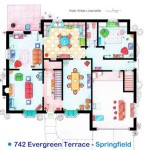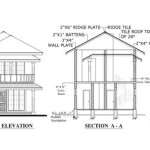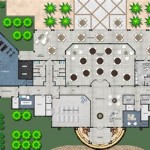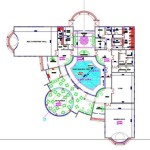Cape Cod Addition Plans: A Comprehensive Guide
Cape Cod-style homes, known for their charming exteriors and cozy interiors, are a popular choice for homeowners who desire a classic and timeless look. If you're considering adding an addition to your Cape Cod home, it's important to carefully plan the project to ensure it blends seamlessly with the existing structure. In this comprehensive guide, we'll explore the various aspects of Cape Cod addition plans, providing you with the necessary information to make informed decisions during the planning process. ### 1. Understanding Cape Cod Architecture Before embarking on an addition project, it's essential to understand the key architectural elements of Cape Cod homes. These homes typically feature a symmetrical facade, with a central front door flanked by windows on either side. The roof is typically gabled, with dormer windows adding character and additional light to the upper floors. The exterior is often clad in shingles or clapboard siding, giving the home a warm and inviting appearance. ### 2. Considerations for Cape Cod Additions When planning an addition to a Cape Cod home, there are several factors to consider: -Compatibility with Existing Structure:
The addition should complement the existing home's architectural style and maintain its overall charm. This means considering the materials, colors, and design elements used in the original construction. -Functionality and Flow:
The addition should seamlessly integrate with the existing layout, providing a natural flow between spaces. Consider how the addition will be used and how it will impact the daily lives of the occupants. -Site Conditions:
The size and location of the addition should be carefully considered based on the available space and the orientation of the home on the lot. Factors such as sunlight, privacy, and views should also be taken into account. ### 3. Types of Cape Cod Additions There are various types of additions that can be incorporated into a Cape Cod home, depending on your specific needs and preferences: -Rear Additions:
These additions extend the back of the home, typically providing additional living space, a kitchen expansion, or a family room. They offer a seamless connection to the backyard and outdoor living areas. -Side Additions:
Side additions add space to one side of the home, often creating a mudroom, home office, or additional bedrooms. They can also be used to expand the garage or create a separate entrance. -Second-Story Additions:
Second-story additions add living space on the upper level of the home, providing additional bedrooms, bathrooms, or a master suite. They can also include dormers or skylights to bring in natural light. ### 4. Design Elements for Cape Cod Additions To ensure a harmonious blend between the addition and the existing Cape Cod home, consider the following design elements: -Rooflines and Dormer Windows:
Incorporate similar rooflines and dormer windows to maintain the classic Cape Cod aesthetic. -Exterior Materials:
Use materials that complement the existing siding, such as shingles, clapboard siding, or painted wood. -Windows and Doors:
Choose windows and doors that match the style and proportions of the existing ones. -Interior Design:
Maintain a consistent design theme throughout the addition, using colors, finishes, and furnishings that blend with the existing decor. ### 5. Building Permits and Regulations Before starting any construction, it's crucial to obtain the necessary building permits and comply with local regulations. Contact your local building department to determine the specific requirements for your project. ### 6. Hiring a Qualified Contractor When selecting a contractor for your Cape Cod addition project, look for someone experienced in working with this type of home. A qualified contractor will be able to guide you through the planning and construction process, ensuring the addition meets your needs and complies with all applicable regulations. ### Conclusion Cape Cod addition plans can transform your home into a more spacious and functional living space while preserving its classic charm. By carefully considering the architectural elements, site conditions, and design details, you can create an addition that seamlessly blends with your existing Cape Cod home. With the right design and construction team, you can achieve a beautiful and cohesive living environment that meets your family's needs for years to come.
Space Planning A Cape Add On Building Advisor

Pin By Alice Byrne On The Beginning Efforts Of Remodeling Cape Style Homes Cod House

Cape Cod Second Floor Additions Before And After Bluestem

Cape Cod Addition

The Essential Guide To Cape Cod Home Additions Latest Ideas

Preview Cape Cod House Plans Modular Home Exterior

Cape Additions Make Great Homes Better Stories Simply

The Essential Guide To Cape Cod Home Additions Latest Ideas
Small Colonial Cape Cod House Plan 2 3 Bedroom 1245 Sq Ft

Make Room To Grow With A Cape Cod House Addition








